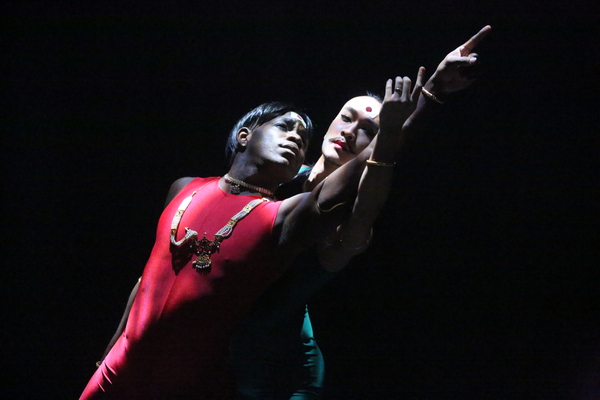View more photos below - click here
OVERVIEW
| Role | Voice Type | Range ? | Character Description |
|---|---|---|---|
| Prince | middle-high | A Prince | |
| Newborn Woman | middle-low | A Woman born of the Prince's side | |
| Lover | middle-high | Newborn Woman's new lover | |
| Dancer | silent-spoken | Represents inner feelings of Prince | |
| Dancer | silent-spoken | Represents inner feelings of New Woman |
SYNOPSIS
Unwilling to marry a woman, a man fashions a lover from his own left side. He’s enraptured by her perfect beauty – a mirror of his own – until he discovers that this new woman longs for freedom and wildly desires another.
MUSIC DESCRIPTION
PREMIERE PRODUCTION INFORMATION
| Role | Name |
|---|---|
| Prince | Scott Belluz |
| Newborn Woman | Subhiksha Rangarajan |
| Lover | Alex Samaras |
| Dancer | Ravyn Wngz |
| Dancer | Sze-Yang Ade-Lam |
| Role | Name |
|---|---|
| Choreographer | Hari Krishnan |
| Director | Marie-Nathalie Lacoursière |
| Music Director | Larry Beckwith |
| Set & Costume Design | Rex |
| Lighting | Gabriel Cropley |
CREATION
QUOTATIONS FROM CREATIVE TEAM
Just when you think you’ve grasped it, the story slithers away like a snake — that’s what keeps me fascinated. What seems like a familiar “woman born of man” creation story gets a feminist twist: the Newborn Woman outfoxes the Prince and heads off into a blissful future of new lovers. The tale comes from Karnataka in South India, where elements of matriarchal culture still play out in family structures. It’s not a myth, but a folk tale handed down from one generation of women to the next. It could be understood perhaps as a story of consolation for women enduring the hardships of life in a man’s world.
On a more personal note, the tale suggests the need to find a balance between what we might understand as the masculine and the feminine within each of us — to seek a more nuanced understanding of gender. The Prince locks up and limits the Newborn Woman — the Other — keeping what is different at a suspicious distance. In contrast, the Lover and the Newborn Woman fall in love through a gentle process of listening and exchange. The Lover uses imagination to understand what the Newborn Woman is telling him. Unlike The Prince, who imposes an idealized femininity onto the Woman, the Lover listens, waits and understands. Openness to difference and generosity of imagination transform our encounters with “the Other”, both within our selves and in the wider world.
- Juliet Palmer, composer
MEDIA
There are no reviews yet. Be the first one to write one.
REVIEW THIS OPERA
You must be logged in to submit a review.
Submit a Suggestion
Please Note: As we try our best to ensure that all the data on this page is correct please understand that these pages were built by humans, so we're bound to make mistakes. Let us know if you have found any errors, typos, or mistakes on this page. If you have any suggestions on adding tags to this page, please use this email link as well. Thank you, your help and contribution are appreciated.




